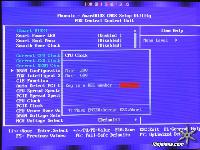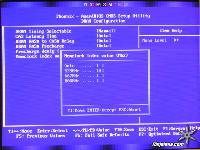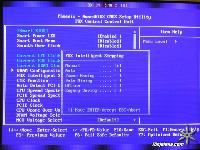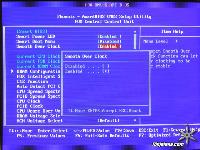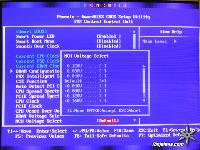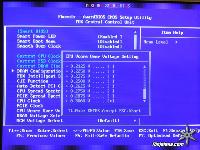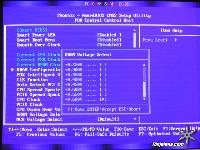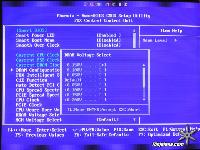After careful consideration I have decided to transfer all hardware review activities to a new domain. I purchased Hardwareasylum.com in 2012 and have been working hard to build a new and improved Ninjalane on that domain. If you are reading this you have reached one of the archived articles, news, projects and/or reviews that were left behind during the site migration.
Please update your bookmarks and be sure to visit the new and improved Ninjalane at Hardwareasylum.com
Foxconn 975X7AA-8EKRS2H Motherboard Review
Author: Dennis Garcia
Published: Thursday, May 11, 2006
Bios Features
A well done and robust BIOS can make or break a system and in adding to the fun everyone will use (or not use) the features differently. Some users will never enter the BIOS just so long as the system works properly. Computer Enthusiasts will spend a great deal of time tweaking and testing settings until they have achieved what they consider to be a victory. The Foxconn 975X7AA BIOS supports both of these scenarios, by default the system runs fine directly out of box and even even after a CMOS reset but for those looking to get a little more the FOX Central Control Unit is where you want to look.
Below are several photos of the more interesting screens.
Below are several photos of the more interesting screens.
FSB has a range from 200 to 600 Mhz and the memory clock has divider support for DDR2 modules up to 800Mhz.
The intelligent stepping is a form of "auto overclocking" available to the user. The information we received on the intelligent stepping is as follows.
AUTO = 5 to 7 %
Power Gaming = 20 to 21.5%
Data Mining = 10 to 11%
Office = 3 to 3.5%
Energy Savings = FOX-ONE will power CPU Frequency down automatically to save energy according to system using status.
The smooth overclock feature is designed to help make overclocking easier. .
.
AUTO = 5 to 7 %
Power Gaming = 20 to 21.5%
Data Mining = 10 to 11%
Office = 3 to 3.5%
Energy Savings = FOX-ONE will power CPU Frequency down automatically to save energy according to system using status.
The smooth overclock feature is designed to help make overclocking easier.
The rest of the screens are showing basic voltage settings, we find it interesting that Foxconn has offered negative voltage modifiers. In terms of power consumption and heat even the slightest reduction in voltage can go a long way. The down side is that much like overclocking you will need to fully test an undervolted system for stability.

